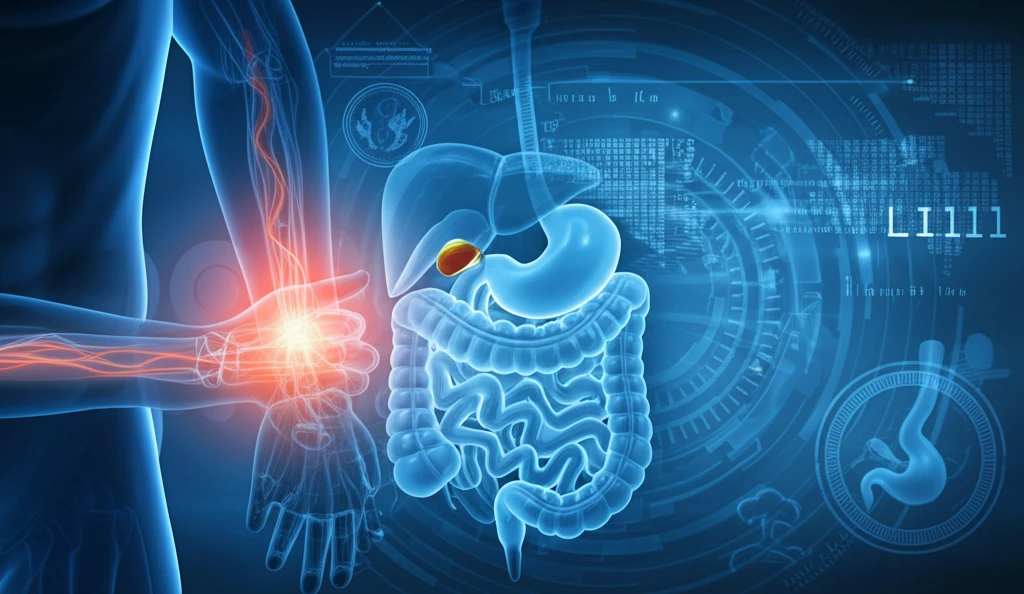
Acupuncture Points: Unlocking Gut Health with LI11 and the Parasympathetic Pathway
"Discover how electroacupuncture at the LI11 point can revolutionize your approach to digestive wellness by tapping into the body’s natural healing systems."
Gastrointestinal (GI) issues, encompassing everything from chronic constipation and diarrhea to the complexities of irritable bowel syndrome (IBS), affect a significant portion of the population. While conventional treatments often provide some relief, many individuals seek complementary therapies to better manage their symptoms and improve their overall gut health. Acupuncture, a cornerstone of Traditional Chinese Medicine, has emerged as a promising option.
Acupuncture's effects on gastrointestinal motility have been extensively studied, particularly focusing on abdominal and lower limb acupoints. However, recent research is exploring the impact of stimulating acupoints on the forelimbs to mediate gut function. One such point, LI11 (Quchi), located on the arm, has traditionally been used to treat GI disorders. New studies aim to uncover the mechanisms by which LI11 influences digestive processes, specifically its relationship with the parasympathetic nervous system—the 'rest and digest' system.
This article delves into the groundbreaking research investigating how electroacupuncture (EA) at the LI11 acupoint promotes jejunal motility—the movement of the small intestine that aids digestion—through the parasympathetic pathway. We will explore how this approach could revolutionize the way we manage gastrointestinal health, offering a natural and effective alternative to traditional treatments.
Electroacupuncture at LI11: A New Frontier in Gut Health

A recent study published in BMC Complementary and Alternative Medicine sheds light on the potential of electroacupuncture (EA) at the LI11 acupoint to enhance jejunal motility by activating the parasympathetic pathway. This research sought to determine if EA at LI11 could stimulate the gut, whether the parasympathetic pathway was involved, and which specific nerve fibers played a role in this process. Researchers used male Sprague-Dawley rats and various types of mice, including knockout models, to examine these effects under different conditions, such as with and without drug administration or vagotomy (severing of the vagus nerve).
- EA at LI11 promotes jejunal motility.
- The parasympathetic pathway is essential for this effect.
- Ad-fibers and C-fibers may play significant roles.
- Muscarinic receptors are key to LI11's impact on gut function.
The Future of Acupuncture in Digestive Health
The study not only reinforces the role of acupuncture in regulating gastrointestinal function but also opens new avenues for exploring targeted therapies for digestive disorders. By understanding the specific pathways and nerve fibers involved, practitioners can refine acupuncture techniques to maximize their effectiveness. This research supports the integration of acupuncture as a complementary approach to managing gastrointestinal health, offering hope for those seeking natural and effective solutions.
